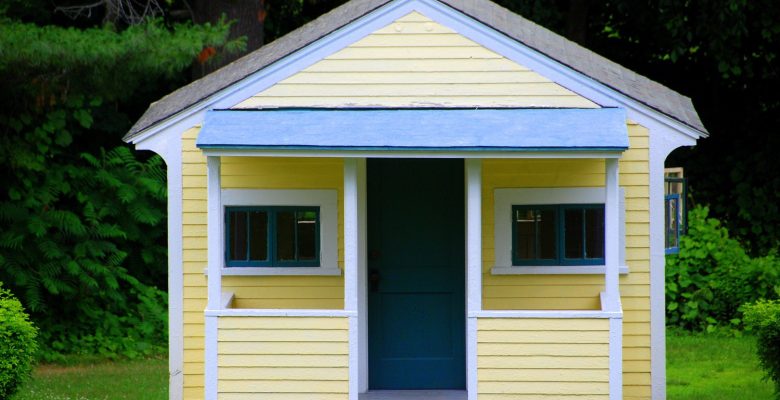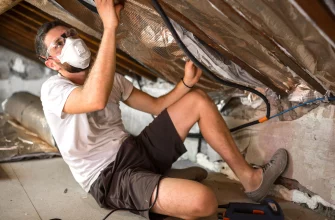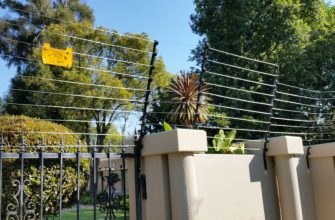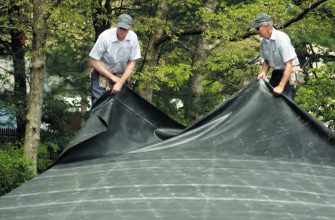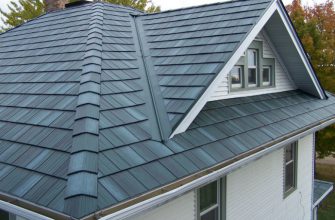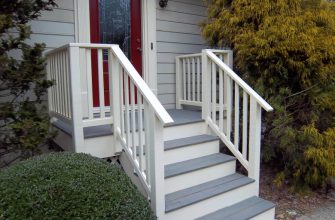Choosing the right siding and skirting for your mobile home can make a huge difference in its appearance and curb appeal. With so many options to consider, from materials to colors to installation methods, it can be overwhelming trying to decide what will look best on your manufactured home while also fitting your budget.
In this comprehensive guide, we’ll walk through the importance of mobile home exterior enhancements, the different roles that siding and skirting play, and provide an overview of the most popular material choices for both. We’ll also discuss key factors in selecting materials, do a cost-benefit analysis, and explore longevity and aesthetics considerations. Finally, we’ll suggest additional ideas beyond just siding and skirting to really make your mobile home exterior stand out.
- Importance of Enhancing the Exterior of Your Mobile Home
- The Role of Skirting and Siding in Enhancing the Appearance
- Mobile Home Siding Options
- Overview of Different Siding Materials
- Vinyl Siding
- Concrete Siding
- Brick Siding
- Wood Siding
- Metal Siding
- Mobile Home Skirting Options
- Importance of Skirting for a Mobile Home
- Overview of Different Skirting Materials
- Vinyl Skirting
- Concrete Skirting
- Wood Skirting
- Metal Skirting
- Foam Skirting
- Simulated “Rock” Skirting
- Faux Stone Skirting
- Choosing the Right Skirting and Siding for Your Mobile Home
- Factors to Consider When Choosing Skirting and Siding
- Cost-Benefit Analysis of Different Materials
- Aesthetics and Longevity Considerations
- Enhancing the Exterior of Your Mobile Home
- Ideas for Enhancing the Exterior Beyond Skirting and Siding
- Unique Front Door and Architectural Accents
- Repainting or Repairing Siding
- Sprucing Up Skirting
- Adding Porch, Deck, or Carport
- Landscaping and Outdoor Living Space Optimization
Importance of Enhancing the Exterior of Your Mobile Home
Investing in quality siding and skirting for your mobile home is one of the best ways to increase its curb appeal, weather resistance, and even resale value. Many homeowners wrongly assume that putting money into a manufactured home exterior is wasted since these structures may seem temporary.
However, enhancing your mobile home with attractive, durable exterior materials can make it look more like a traditional site-built house. This can go a long way toward improving neighborhood perceptions, satisfying HOA requirements, and allowing your home to blend seamlessly into the surrounding community.
Additionally, the right siding and skirts protect your home from outside elements like rain, wind, and humidity that can otherwise seep underneath and cause moisture damage or encourage pest infestations. Investing in proper exteriors provides security and prevents costly repairs down the road.
The Role of Skirting and Siding in Enhancing the Appearance
Mobile home skirting and siding serve different primary purposes, but work together to create an attractive, finished exterior:
- Siding covers the above-ground, vertical exterior walls of a mobile home just like traditional housing. Popular siding options include vinyl, wood, brick, concrete, and metal.
- Skirting encloses the open space between the ground and your home, hiding any foundation, insulation, and utility connections from view. Common skirting materials are vinyl, wood, brick, stone, and metal panels.
Choosing complementary styles and colors of siding and skirting is key to making your mobile home exterior look cohesive. Pay attention to design elements like texture and pattern so your siding and skirts work together rather than competing for attention.
Mobile Home Siding Options
Overview of Different Siding Materials
Mobile home siding comes in a range of materials, with some of the most popular choices being:
Vinyl Siding
Vinyl is affordable, low-maintenance, and available in many colors and styles. Insulated vinyl siding can help improve energy efficiency. However, vinyl can dent, fade over time, and look cheap if low quality.
Concrete Siding
Concrete siding is extremely durable and provides good insulation. It comes in many attractive styles resembling wood or brick. However, it is very heavy and one of the more expensive siding options.
Brick Siding
Natural full brick is beautiful but heavy and expensive. Synthetic faux brick panels give a similar charming look at a lower cost and easier installation. Brick siding options are very durable and require little upkeep.
Wood Siding
Cedar and redwood siding have a timeless, elegant appeal. Wood holds paint well but requires frequent repainting or staining to look its best and prevent rotting. It’s a high-maintenance but customizable option.
Metal Siding
Steel, aluminum and other metals like copper offer extreme durability and visual interest. Metal siding can withstand almost any weather condition. It comes in many textures and can mimic wood grain. However, large metal panels will dent and can be noisy in rain or hailstorms.
Mobile Home Skirting Options
Importance of Skirting for a Mobile Home
Installing quality skirting around the base of your manufactured home is crucial not just for aesthetics but also for performance, resale value, and protecting your investment. Benefits include:
- Prevents pests, animals, and excess moisture from infiltrating under home.
- Hides unattractive foundation and structural components.
- Insulates and improves energy efficiency.
- Can deter break-ins when secured properly.
- Contributes up to 20% increased resale value.
Skirting helps your mobile home look more like a standard on-site built house, allowing it to blend better with neighboring homes. It completes the exterior facade.
Overview of Different Skirting Materials
Some top options for mobile home skirting are:
Vinyl Skirting
Vinyl skirting costs less upfront than many options but can fade, dent, and tear over time. It comes in a wide variety of colors and textures to complement siding.
Concrete Skirting
Concrete skirting made from blocks or panels is extremely durable but very expensive, difficult to install, and not customizable. It lasts for decades with little maintenance required.
Wood Skirting
Like wood siding, natural cedar or redwood skirting has aesthetic appeal but requires frequent staining, painting, and repair. Synthetic wood-look panels are lower maintenance.
Metal Skirting
Aluminum, galvanized steel and copper skirting won’t rot or attract pests. Metal is durable but expensive, and hollow panels dent easily. The installation process is similar to vinyl skirting.
Foam Skirting
Insulated foam boards help improve home energy efficiency the most of any skirting option. Foam panels are more expensive than vinyl or metal and not as durable long-term.
Simulated “Rock” Skirting
Faux rock vinyl panels give a natural stone look for much less cost than real stone. This lightweight option installs quickly but lacks dimensional depth compared to real stacked stone.
Faux Stone Skirting
Manufactured from dense polyurethane to mimic authentic stone textures, faux stone composite skirting provides an incredibly realistic look. The high cost is offset by extreme durability and low maintenance.
Choosing the Right Skirting and Siding for Your Mobile Home
Factors to Consider When Choosing Skirting and Siding
With many material options for both your mobile home’s siding and skirting, it’s important to weigh several factors as you decide what to install:
- Environmental impact – Consider the sustainability, recyclability, and carbon footprint of the materials used.
- Safety – How well do the materials and installation methods meet safety standards and regulations, especially in terms of fire resistance and structural integrity.
- Noise reduction – Will the chosen materials and installation methods help reduce noise from outside or between rooms.
- Functionality – Consider how well the materials and design choices will meet your specific needs and lifestyle, such as ease of cleaning, storage options, and practicality for daily use.
- Health considerations – Are there any potential health risks associated with the materials used, such as off-gassing of volatile organic compounds (VOCs) or allergenic properties.
- Accessibility – Will the chosen materials and design choices accommodate individuals with disabilities or limited mobility.
Carefully weighing all these factors will lead you to the best siding and skirting solutions for your specific home and needs.
Cost-Benefit Analysis of Different Materials
Let’s analyze the upfront and long-term costs associated with the most popular mobile home siding and skirting materials:
Vinyl – Very affordable upfront but may need replacing every 8-12 years. Easy DIY installation saves labor fees.
Concrete – Extremely expensive initial cost but will likely outlast the home itself needing no replacement. Professional installation is required, adding to overall cost.
Brick – Mid-range upfront cost that pays off thanks to decades of beauty and durability with little maintenance. Another material likely to outlast the home itself.
Wood – Natural wood is affordable initially but requires frequent staining/painting and eventual replacement. Synthetic wood-look costs more but needs less maintenance.
Metal – High upfront cost but extremely long-lasting, offsetting replacement needs. Easy DIY installation helps control overall budget.
Foam – Costlier than vinyl but can yield savings on energy bills over time. Still needs occasional replacing so not the most budget-friendly option long-term.
Aesthetics and Longevity Considerations
While cost is key, you also want siding and skirting that maintains visual appeal and performs well into the future. Vinyl and synthetic wood panels often look cheap quickly as they fade, dent, and deteriorate. Natural wood requires heavy maintenance to stay attractive.
Concrete, brick, stone, and metal materials resist weathering exceptionally well, keeping their good looks for decades. Concrete and brick siding may need occasional power washing to remove grime but won’t rot, peel, dent, or warp like other materials.
Consider your preferred architectural style too. For traditional charm, wood or brick is ideal. Modern homes shine with metal or high-end vinyl. Concrete and stone complement almost any style well.
Discuss lifespan estimates with manufacturers and contractors. Quality metals and heavy concrete can last 50 years or more. Wood and vinyl siding may need replacing in under 15 years.
Enhancing the Exterior of Your Mobile Home
Ideas for Enhancing the Exterior Beyond Skirting and Siding
Properly installing attractive, durable skirting and siding is the first key step toward exterior home improvements. But you can take mobile home curb appeal even further with these additional ideas:
Unique Front Door and Architectural Accents
Make a bold statement by installing a vibrant, modern front door. Add other accents like shutters, decorative trim, or stone/brick steps leading up to the entryway.
Repainting or Repairing Siding
Freshen up faded vinyl or wood siding with a new layer of protective exterior paint. Make any needed spot repairs too. This buys you more years before a full siding replacement.
Sprucing Up Skirting
Enhance plain vinyl or metal skirting with decorative trim along the top edge or a fresh coat of paint in an updated color. Strategically placing shrubs or flowers helps hide problem areas.
Adding Porch, Deck, or Carport
Extend your living space outdoors by adding on an enclosed porch, open-air deck, or basic carport along one side of your home. This also breaks up siding visuals.
Landscaping and Outdoor Living Space Optimization
Frame your mobile home with lush green grass, vibrant flower beds and bushes, rock elements, and decorative pathway lighting. Develop a patio, fire pit hangout, or poolside lounging getaway out back. Landscaping goes a long way toward mobile home curbage appeal.
With the right combination of durable siding and skirting, along with these additional enhancements, your mobile home can have a beautiful and inviting exterior that will last for years to come.

